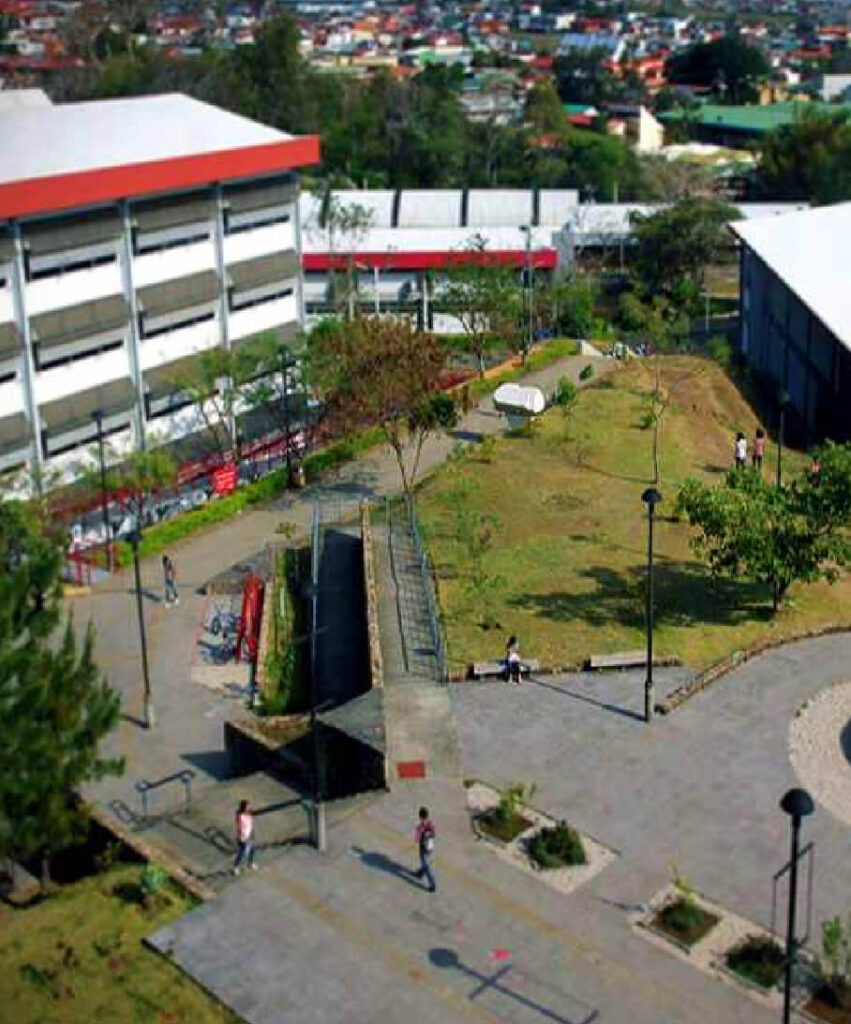
The National University is one of the most representative institutions of Costa Rican Higher Education, not only because it is the second house of university studies created in the country, but also because, since its origins, it has built an educational, scientific, cultural, and social project that is comprehensive, inclusive and above all, at the service of Costa Rican society. This mission has been undertaken through the development of two important tasks: the training of high-level professionals and the exchange with civil society of knowledge and wisdom in its most varied expressions, through research and social outreach.
The history of the National University dates to the creation of the Normal School at the beginning of the twentieth century and the Higher Normal School in the sixties.
It became the National University of Costa Rica in 1973, thanks to the efforts of an important group of citizens led by Benjamín Núñez, the first rector of this house of studies. Its institutional strength has been forged day after day in these four decades with the contributions of its academics, administrators, and students, to the point of receiving recognition by the national and international community. Many illustrious personalities of science, culture, humanities, and the arts of Costa Rica have been educated and have developed academic activities there.
It has 8 campuses around the country with an equal number of faculties, 32 schools and 13 institutes. Its academic offer is made of 197 academic options with 134 undergraduate curriculums, 58 master programs with 85 specializations and 58 PhDs with 9 specializations
For the year 2017, the student’s population of the UNA was of 19700, with 526 new students joining for the year 2018, from which 65% are women and 35% are men; with 89% of all the new students coming from rural areas and 11% coming from urban areas.
On the extension subject, a model of territorial focus is held for the treatment of 27 priority subjects.
On international agreements, UNA has achieved a total of 109, from which 60,6% are with Latin American countries.
On scholarships and student benefits, $3,3 million are estimated to benefit 6 thousand students and $287 thousand for 1 thousand students in extreme poverty conditions.

Lorem ipsum dolor sit amet, consectetuer adipiscing elit, seddiam nonummy nibh euismod tincidunt ut laoreet doloremagna aliquam erat volutpat. Ut wisi enim ad minim veniam,quis nostrud exerci tation ullamcorper suscipit lobortis nisl utaliquip ex ea commodo consequat. Duis autem vel eumiriure dolor in hendrerit in vulputate velit esse molestieconsequat, vel illum dolore eu feugiat nulla facilisis at veroeros et accumsan et iusto odio dignissim qui blandit praesentluptatum zzril delenit augue duis.
Lorem ipsum dolor sit amet, consectetuer adipiscing elit, seddiam nonummy nibh euismod tincidunt ut laoreet doloremagna aliquam erat volutpat. Ut wisi enim ad minim veniam,quis nostrud exerci tation ullamcorper suscipit lobortis nisl utaliquip ex ea commodo consequat. Duis autem vel eumiriure dolor in hendrerit in vulputate velit esse molestieconsequat, vel illum dolore eu feugiat nulla facilisis at veroeros et accumsan et iusto odio dignissim qui blandit praesentluptatum zzril delenit augue duis.